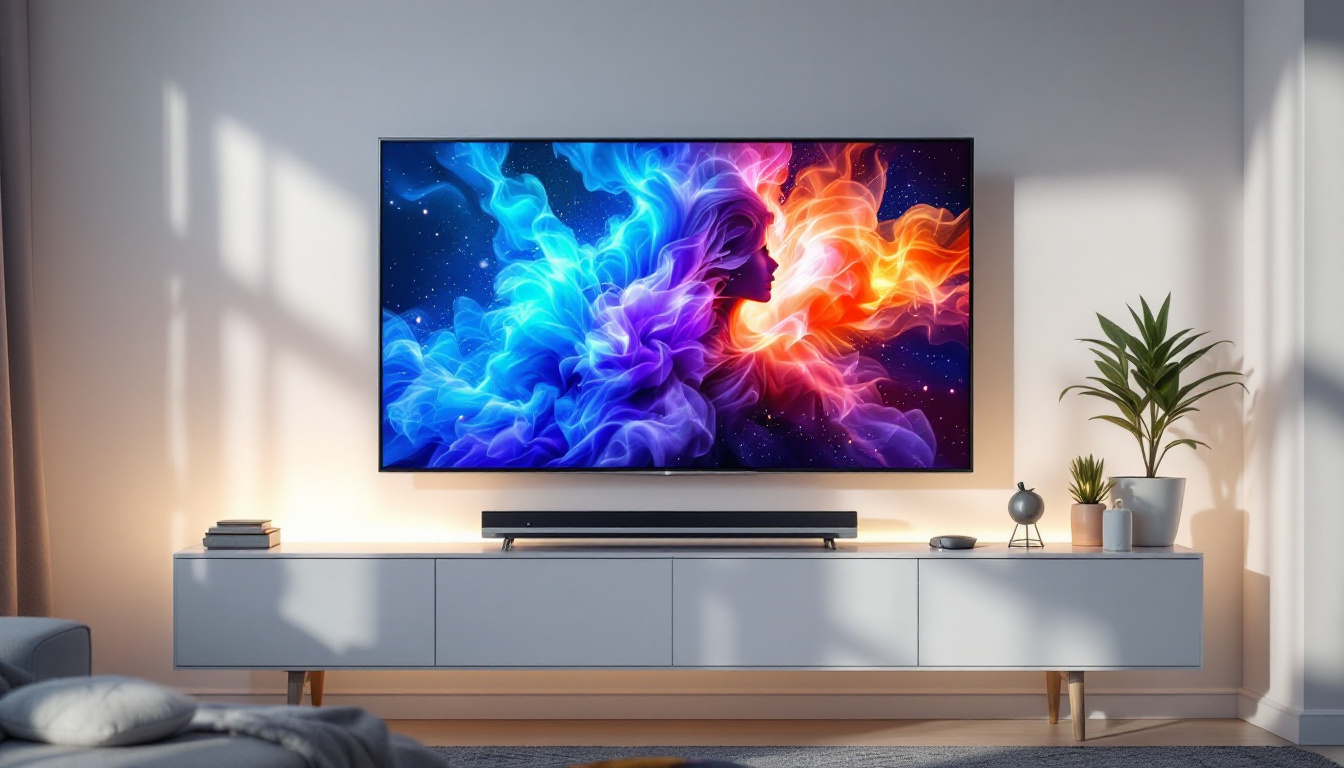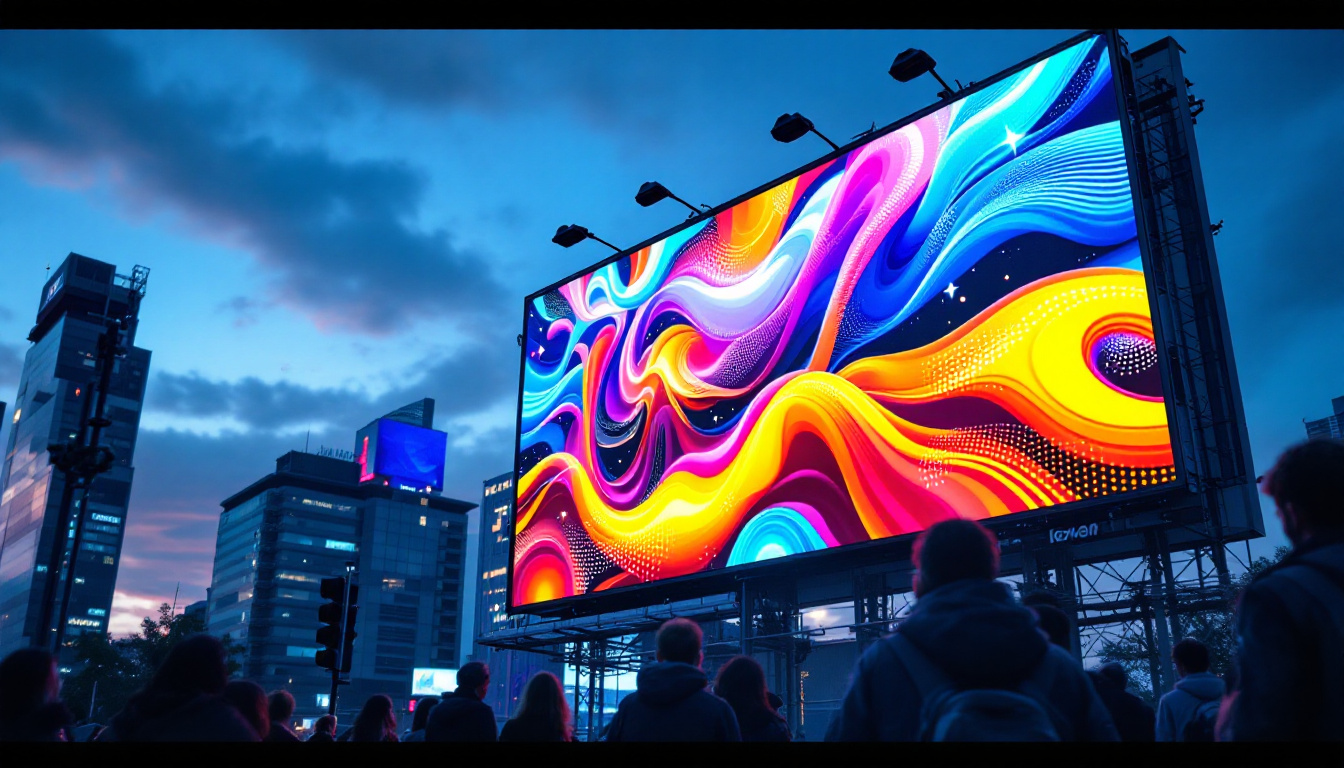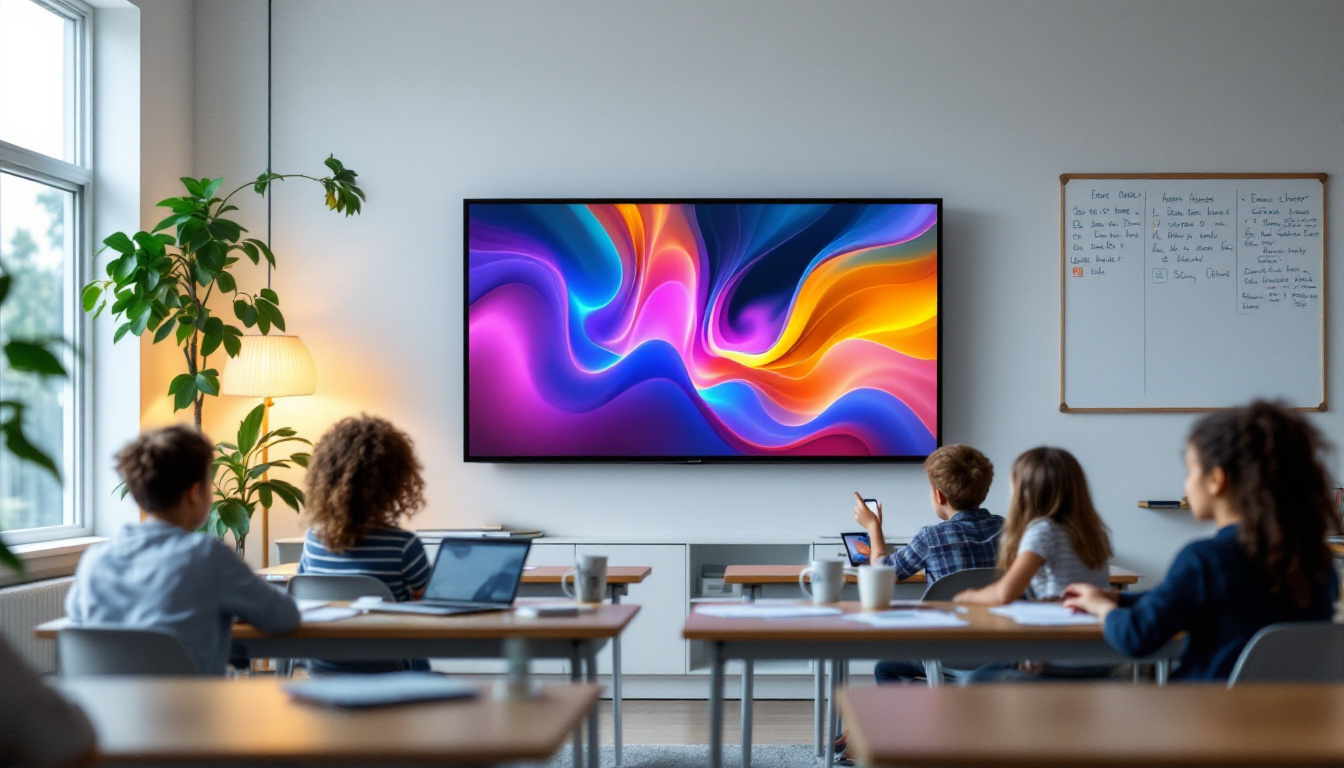Dual Sided TV: LED Display Explained
In recent years, the evolution of television technology has taken a significant leap forward with the introduction of dual-sided TVs. These innovative displays are not only captivating in design but also offer unique functionalities that cater to modern viewing habits. This article delves into the intricacies of dual-sided LED displays, exploring their benefits, applications, and the technology that powers them.
Understanding Dual-Sided TVs
Dual-sided TVs, as the name suggests, feature screens on both sides, allowing content to be viewed from multiple angles. This design is particularly advantageous in environments where space is limited, or where multiple viewers are present. The dual-sided configuration enhances the viewing experience by providing flexibility and versatility.
How Dual-Sided TVs Work
The technology behind dual-sided TVs primarily relies on LED (Light Emitting Diode) displays. These displays utilize a matrix of tiny LEDs that emit light when an electric current passes through them. The result is a vibrant and energy-efficient screen that can produce a wide range of colors and brightness levels.
In a dual-sided configuration, two LED panels are typically housed within a single frame, allowing them to display content simultaneously or independently. This setup can be particularly useful in commercial settings, such as retail stores, where advertisements can be viewed from both inside and outside the store. Additionally, the screens can be programmed to show different content at different times, maximizing their utility and ensuring that the displayed information is always relevant to the audience present.
Benefits of Dual-Sided LED Displays
The advantages of dual-sided LED displays extend beyond mere aesthetics. One of the most significant benefits is their ability to maximize visibility and engagement. By allowing content to be viewed from two sides, these TVs can capture the attention of a larger audience, making them ideal for advertising and promotional purposes.
Moreover, dual-sided TVs can enhance the ambiance of a space. In homes, they can serve as stunning room dividers, providing entertainment while also contributing to the overall décor. In commercial environments, they can create an immersive experience that draws customers in and encourages interaction with the displayed content. For instance, in a café, a dual-sided TV could showcase menu items on one side while displaying engaging visuals or customer testimonials on the other, thereby enriching the dining experience and potentially increasing sales.
Furthermore, the versatility of dual-sided TVs allows for innovative applications in various sectors. In educational settings, they can facilitate collaborative learning by displaying information to both teachers and students simultaneously. In museums or galleries, these displays can offer a unique way to present exhibits, allowing visitors to view detailed information from different angles without obstructing the flow of foot traffic. This adaptability not only enhances user engagement but also promotes a more dynamic interaction with the content being presented.
Applications of Dual-Sided TVs
Dual-sided TVs are versatile devices that can be utilized in a variety of settings. Their unique design and functionality make them suitable for both residential and commercial applications.
Residential Use
In residential spaces, dual-sided TVs can be employed as innovative room dividers. For instance, a dual-sided TV can separate a living room from a dining area while simultaneously providing entertainment in both spaces. This not only optimizes the use of space but also adds a modern touch to home décor.
Additionally, these TVs can be used in outdoor settings, such as patios or balconies, allowing homeowners to enjoy their favorite shows or movies while entertaining guests. The ability to view content from different angles enhances the overall experience, making gatherings more enjoyable. Imagine hosting a summer barbecue where the dual-sided TV displays a sports game on one side while showcasing a vibrant slideshow of family memories on the other, creating a perfect blend of entertainment and nostalgia.
Furthermore, dual-sided TVs can be integrated into home automation systems, allowing users to control what is displayed from their smartphones or tablets. This feature not only adds convenience but also allows for personalized viewing experiences tailored to the preferences of different family members. Whether it’s streaming a movie for the kids on one side while displaying the news or a cooking tutorial on the other, the possibilities are endless.
Commercial Use
In commercial settings, dual-sided TVs have proven to be invaluable tools for marketing and advertising. Retailers can display promotional content to customers both inside the store and on the street, effectively reaching a broader audience. This dual visibility can significantly increase foot traffic and sales.
Moreover, restaurants and bars can utilize dual-sided TVs to showcase menus, special offers, or entertainment options to patrons on both sides of the establishment. This not only enhances customer engagement but also creates a lively atmosphere that encourages social interaction. For instance, a bustling bar might display live sports events on one side while showcasing drink specials on the other, ensuring that patrons are always informed and entertained.
Additionally, dual-sided TVs can serve as informative kiosks in hotels and airports, providing travelers with essential information such as flight statuses, local attractions, or event schedules. By placing these TVs in high-traffic areas, businesses can effectively communicate with their audience, ensuring that important messages reach as many people as possible. This strategic placement not only enhances customer experience but also reinforces brand visibility in competitive environments.
Technological Advancements in Dual-Sided Displays
The technology behind dual-sided TVs has evolved rapidly, leading to improvements in display quality, energy efficiency, and user experience. Understanding these advancements can shed light on what makes dual-sided LED displays a compelling choice for consumers and businesses alike.
High-Definition and 4K Resolution
Modern dual-sided TVs often come equipped with high-definition (HD) or even 4K resolution capabilities. This means that viewers can enjoy crystal-clear images with vibrant colors and sharp details, regardless of which side they are viewing from. The enhanced resolution elevates the viewing experience, making content more engaging and lifelike.
Additionally, advancements in display technology, such as OLED (Organic Light Emitting Diode), have further improved picture quality. OLED displays offer deeper blacks and more vibrant colors compared to traditional LED displays, making them an attractive option for dual-sided configurations.
Smart Features and Connectivity
As technology continues to advance, many dual-sided TVs now come with smart features that enhance usability. These features often include built-in streaming services, voice control, and compatibility with smart home devices. This connectivity allows users to access a wide range of content effortlessly, making it easier to enjoy their favorite shows and movies.
Moreover, the ability to connect multiple devices, such as smartphones and tablets, enables users to share content seamlessly across screens. This interactivity adds a new layer of engagement, especially in social settings where multiple viewers are present.
Challenges and Considerations
While dual-sided TVs offer numerous advantages, there are also challenges and considerations that potential buyers should keep in mind. Understanding these factors can help consumers make informed decisions when investing in this technology.
Cost Implications
One of the primary considerations when purchasing a dual-sided TV is the cost. These innovative displays tend to be more expensive than traditional single-sided TVs due to their advanced technology and dual display capabilities. Consumers should weigh the benefits against the investment required and consider whether the features align with their needs.
Additionally, installation costs may also be a factor, especially if the TV is intended for commercial use. Proper installation is crucial to ensure optimal performance and visibility, which may require professional assistance.
Space Requirements
Another important consideration is the space required for a dual-sided TV. These displays can be larger than standard TVs, and their placement may require careful planning to ensure that both sides are visible and accessible. In residential settings, homeowners should consider how the TV will fit into their existing décor and layout.
In commercial environments, businesses must evaluate the best locations for dual-sided displays to maximize their impact. Proper positioning can significantly influence customer engagement and the effectiveness of advertising efforts.
Future of Dual-Sided TVs
The future of dual-sided TVs looks promising as technology continues to advance. Innovations in display technology, coupled with changing consumer preferences, are likely to shape the evolution of these devices in the coming years.
Integration with Augmented Reality
One exciting possibility for the future of dual-sided TVs is the integration of augmented reality (AR) features. This technology could allow users to interact with displayed content in real-time, creating immersive experiences that blend the physical and digital worlds. For example, viewers could receive additional information about a product while watching an advertisement, enhancing their understanding and interest.
As AR technology becomes more mainstream, dual-sided TVs could serve as platforms for interactive advertising and entertainment, further blurring the lines between traditional viewing and active engagement.
Enhanced Energy Efficiency
With growing concerns about energy consumption and environmental impact, future dual-sided TVs are likely to focus on sustainability and energy efficiency. Manufacturers may develop displays that consume less power while maintaining high-quality performance, aligning with global efforts to reduce carbon footprints.
Additionally, advancements in materials and manufacturing processes could lead to more eco-friendly options, appealing to environmentally conscious consumers.
Conclusion
In summary, dual-sided TVs represent a significant advancement in display technology, offering unique benefits and applications for both residential and commercial use. With their ability to engage viewers from multiple angles and provide stunning visuals, these innovative displays are changing the way content is consumed.
As technology continues to evolve, the future of dual-sided TVs looks bright, with potential for enhanced interactivity and sustainability. Whether for home entertainment or commercial advertising, dual-sided LED displays are poised to play a pivotal role in the way audiences experience visual content.
Discover the Future of Visual Engagement with LumenMatrix
Ready to elevate your visual experience and captivate your audience like never before? Explore LumenMatrix’s comprehensive range of LED display solutions, where innovation meets functionality. From immersive Indoor and Outdoor LED Wall Displays to dynamic Vehicle and Sports LED Displays, LumenMatrix is at the forefront of transforming environments and enhancing brand visibility. Whether you’re looking to create a custom visual masterpiece or integrate an All-in-One LED solution, LumenMatrix has you covered. Don’t just share your message—make it resonate with clarity and impact. Check out LumenMatrix LED Display Solutions today and join the revolution in visual communication.































